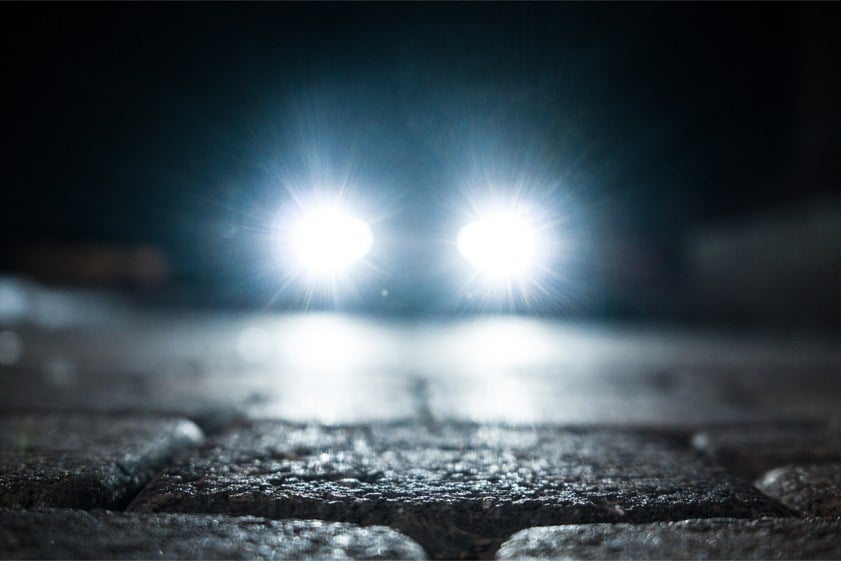
In recent years, a trend has lit up our roads, drawing both interest and worry. The leap from the dim, yellowish glow of early car headlights to today's intensely bright LEDs signifies a major advancement in automotive technology. While this change has improved night-time driving visibility and safety, it has also sparked a global debate among drivers.
As we explore the heart of this glowing controversy, Nationwide Vehicle Contracts examines the technological advancements behind these ultra-bright lights, the reasons for their widespread criticism, and potential solutions to mitigate their impact. Join us as we shed light on a topic that affects all who share the road after dusk.
The history of car headlights is a fascinating story of evolution, from acetylene and oil lamps to halogen bulbs, and finally to the dazzling LED (Light Emitting Diode) and HID (High-Intensity Discharge) technologies we see today. Each innovation aimed to improve driver visibility and safety. Yet, the shift to high-intensity LEDs has introduced a new challenge: increased glare that can temporarily blind oncoming drivers or those in lower vehicles, prompting questions about the balance between visibility and safety.
LED technology has transformed automotive lighting and how we experience the road at night The benefits of LED headlights are compelling: they consume significantly less energy than traditional halogen bulbs, boast a remarkably long lifespan, often outlasting the vehicles they're installed in, and their bright, white beam that mimics natural daylight, enhances driver visibility.
However, this transition has not been without its challenges. A key issue for drivers is the intense glare produced by these headlights, especially when misaligned or installed in larger vehicles like SUVs and trucks, placing them at eye level with drivers in smaller vehicles. This glare can temporarily blind other road users, increasing the risk of accidents.
The rapid adoption of LED headlights has not gone unnoticed by the driving public, with many voicing their experiences and concerns over the increased glare and visibility issues these lights can cause. Social media and online forums are filled with stories from those adversely affected by the intense brightness of these beams.
A viral TikTok video with over 55.3k likes has thrust this issue into the spotlight, with users passionately discussing why car lights have suddenly become so much brighter and its implications on road safety.
Speaking in the viral video, TikTok user @jesstok7 voices a concern many share: "Girls, how are we driving at night these days? The LEDs on these cars, every car that’s been made in the last like 5-10 years has got these blinding LEDs…I cannot see a thing."
This sentiment is echoed in the comments, with many calling for a reevaluation of headlight brightness standards.
As the debate over the brightness of modern car headlights continues, it's essential for drivers to know how to protect themselves from being blinded by these lights. Here are some practical safety tips for navigating the challenges posed by ultra-bright LED headlights:
- Adjust Your Mirrors: Properly adjusting your vehicle’s rearview and side mirrors can significantly reduce the glare from headlights behind you. The rearview mirror in most cars can be tilted to an "anti-glare" position for nighttime driving, which helps by dimming the reflection of the lights without compromising your rear visibility.
- Use the Sidelights of the Road: If an oncoming car’s headlights are too bright, try to avoid looking directly at them. Instead, focus on the white or yellow lines on the side of the road to help maintain your course until the vehicle passes.
- Keep Your Windshield Clean: A dirty windshield can exacerbate the glare from headlights, making it more difficult to see. Ensure your windshield, both inside and out, is clean and free of streaks or smudges. Regularly check your wiper blades for wear and replace them as necessary.
- Consider Anti-Glare Glasses: Anti-glare glasses can help reduce the harshness of LED lights, especially for those who are particularly sensitive. However, it’s important to choose glasses that don’t distort colours or reduce visibility.
- Vehicle Adjustments: Ensure your own headlights are correctly aimed and not contributing to the problem. Headlights that are too high can blind other drivers, so consult your vehicle’s manual or a professional to adjust them properly. Additionally, using your vehicle’s fog lights in conjunction with your regular headlights can sometimes reduce glare for oncoming drivers, as fog lights are designed to have a lower angle of dispersion.
- Increase Following Distance: When driving behind a vehicle with bright LED tail lights, increase your following distance. This not only reduces the intensity of the lights but also gives you more time to react to sudden stops.
By adopting these techniques and adjustments, drivers can better protect themselves from the effects of bright LED headlights, contributing to a safer driving environment for everyone on the road.
“Advances in lighting technology have significantly improved nighttime driving for many, yet their intensity can be a double-edged sword, impacting other drivers' comfort and safety. It's crucial for manufacturers, regulators, and drivers to collaborate in finding a balanced approach that maintains visibility without compromising safety.”

Stay engaged with this critical discussion by following our blog for more updates on this trend, as well as related posts on vehicle safety and technology advancements.
Be sure to share this post with someone who might be grappling with the challenges posed by ultra-bright headlights to help spread awareness and drive towards solutions that ensure the roads are safe and navigable for everyone.
Originally posted: 18th March 2024

